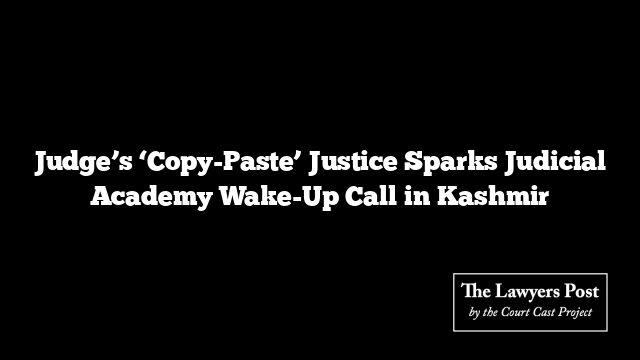In a courtroom slip that didn’t sit well with the higher bench, the Jammu & Kashmir and Ladakh High Court recently called out a civil judge for delivering a verdict that had all the depth of a sticky note. The judge’s terse dismissal of a property-related plea, absent any real reasoning or analysis, was slammed as a textbook example of judicial mindlessness — prompting the High Court to suggest a return to the classroom.
The case, Hakim Nazir v. Commissioner, SMC, Srinagar, revolved around a petition seeking restoration of an iron gate allegedly razed by the Srinagar Municipal Corporation. The civil court had tossed the application with a few short lines that failed to explain the why, the how, or even the what of the decision. No reasoning, no citations, and no reflection — just a barebones dismissal stamped into the record.
Reading from that script, the Magistrate’s order read: “Heard and perused the record. For the reasons stated in the order of the application, the application also lacks merit and is therefore dismissed. Disposed of and made part of the main file.”
That, according to the High Court, was not just minimal — it was judicial negligence.
Justice Vinod Chatterji Koul, unimpressed with the vanishing act of logic, made it clear that justice isn’t about rubber-stamping outcomes. “A judicial order must reveal the mind of the court,” he remarked, adding that “an unreasoned order does not subserve the doctrine of fair play.” The judge’s order, he said, showed “total non-application of mind.”
The High Court wasn’t content to merely overturn the order — which it did, directing the lower court to hear both sides properly this time around. It went a step further and recommended that the judge be sent to the J&K Judicial Academy for what could best be described as a reboot: a refresher course in how to actually write a judgment.
A sharp reminder, then, from the bench above: brevity might be the soul of wit, but in a courtroom, logic and transparency carry the day.





